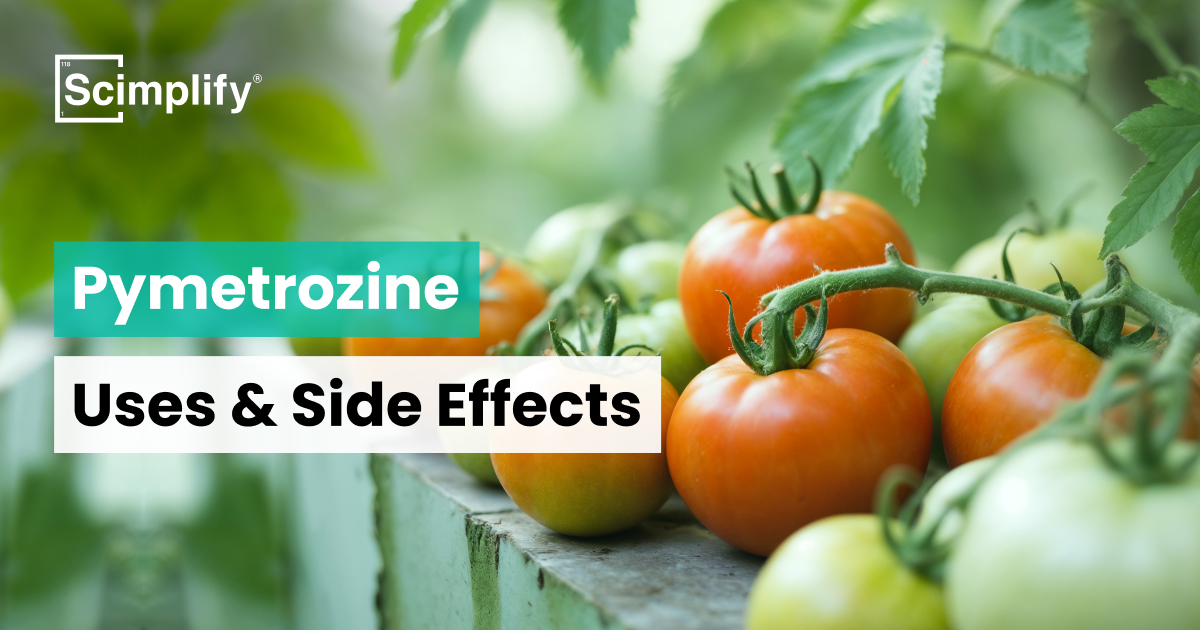Pymetrozine - Uses and Side Effects
Explore pymetrozine uses and side effects: a selective pymetrozine insecticide that blocks feeding in aphids, whiteflies, and planthoppers, ideal for IPM and sustainable control.

Pymetrozine is an artificial pyridine insecticide that has a chemical formula of C10H11N5O and a molar mass of 217.23 g/mol. It is a white-to-light beige crystalline solid whose melting point is about 217 °C. Pymetrozine, which has a unique mode of action, is recognized as acting on the chordotonal organs that trigger feeding behavior in piercing-sucking insects (e.g., aphids, whiteflies, planthoppers). It works by opening particular ion channels (TRPV channels), leading to immediate cessation of feeding and subsequent starvation instead of direct toxicity. This selective neuro-inhibitory action, along with its systemic and translaminar characteristics, allows it to be used effectively in pest management even during new plant development and in areas with inaccessibility, which contributes to its central role in Integrated Pest Management (IPM).
As a trusted supplier and distributor, Scimplify provides high-quality pymetrozine in large quantities to meet the needs of the agricultural and crop protection sectors worldwide.
Pymetrozine Uses
Pymetrozine can be used against several homopteran pests in a variety of crops and environments, such as:
1.Rice
Controls Brown planthopper, white-backed planthopper, and green leafhopper, which are essential to safeguard the crop and avoid the spread of viruses.
2.Vegetable Crops
Useful in the open fields and greenhouse to control aphids and whiteflies on tomatoes, eggplants, leafy greens, and cucurbits.
3.Cotton and Fruit Trees
Used to manage aphids and leafhopper populations that impact crop quality and productivity.
4.Ornamentals and Field Crops
Offers selective pest control without harming beneficial insects.
It is commonly applied as a foliar spray at recommended dosages based on crop and pest pressure, typically inhibiting pest feeding within hours and providing residual control for several days.
Experience Premium Quality Pymetrozine - Request Your Sample!
Industries Where Pymetrozine is Used
- Agrochemical Manufacturing
- Crop Protection & Pest Management
- Sustainable Farming Practices
- Greenhouse and Horticultural Operations
Pymetrozine Side Effects
Even though Pymetrozine is considered environmentally friendly and selective, there are other side effects that include:
1.Skin, Eye, and respiratory irritation
May cause irritation in case of improper handling, therefore ideal rules of pesticide safety need to be followed.
2.Ecotoxicity to Aquatic Life
Poisonous for aquatic organisms such as fish and crayfish at high levels; precautions should be taken to ensure that there is no pollution of water bodies.
3.Resistance Development
Repeated use without rotation can lead to pest resistance, so rotating with insecticides having different modes of action is essential.
Conclusion
Pymetrozine is a new, effective insecticide that provides selective control to piercing-sucking pests that are quite important to crop health in most countries across the world. Its systemic characteristics and mode of action make it helpful in the management of pests in a sustainable manner, avoiding the use of extensive insecticides. Proper use in accordance with the suggested guidelines would guarantee that the crop, farmers, and the ecosystems are effective and safe.


